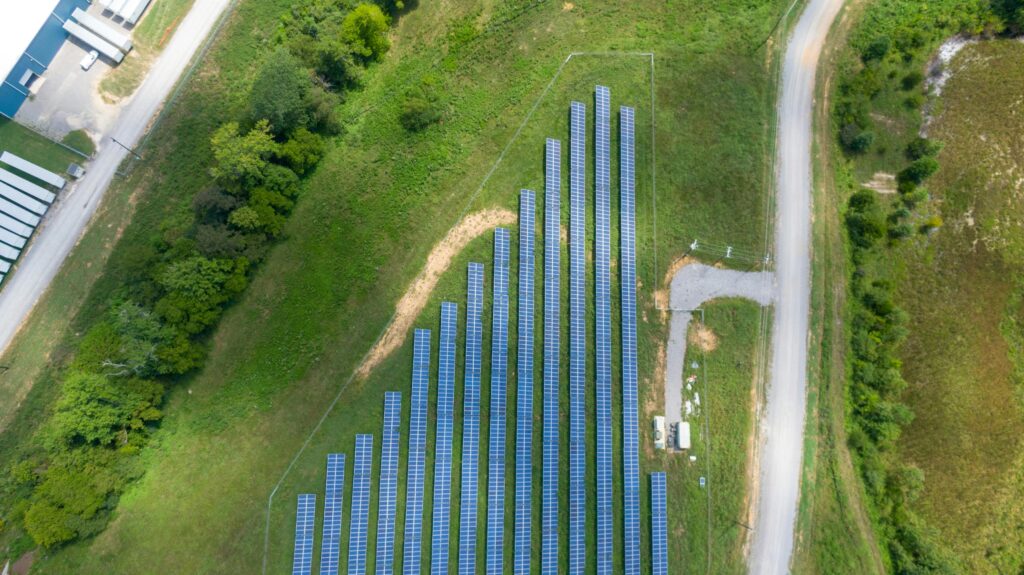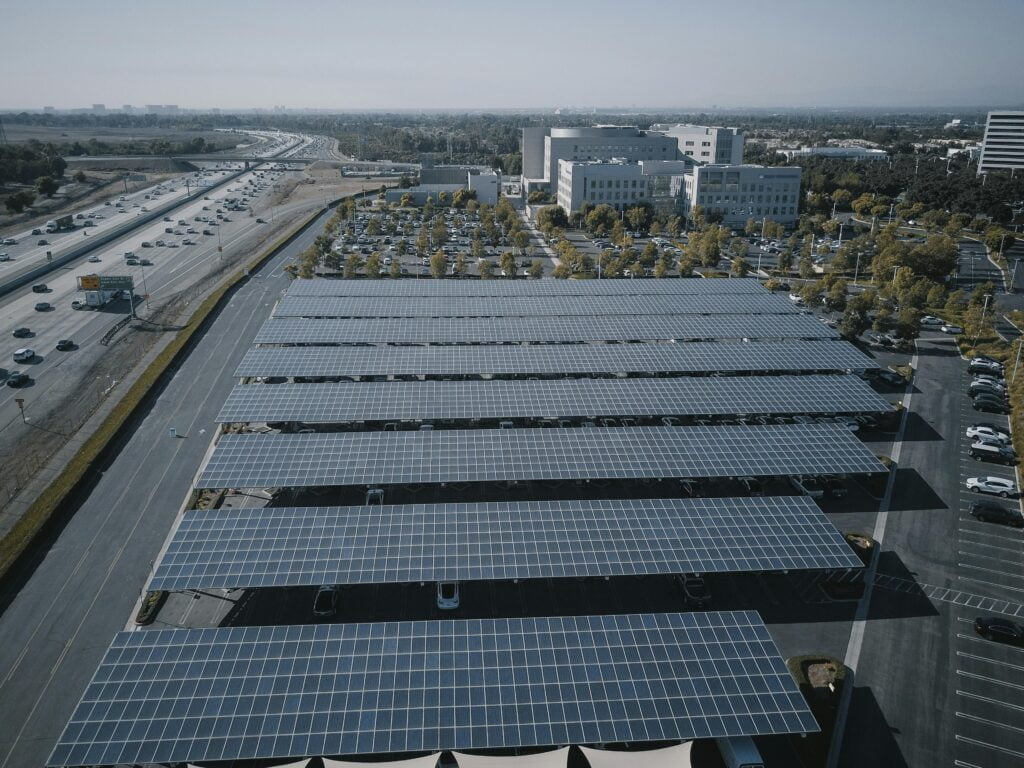The Ultimate Guide to Solar Air Conditioners: Principles, Working, Pricing, and More
As global temperatures rise and energy costs continue to soar, more people are turning to sustainable and cost-effective solutions to cool their homes and offices. One such solution is the solar air conditioner. This innovative technology not only helps reduce electricity bills but also minimizes the environmental impact of air conditioning.

In this comprehensive guide, we will delve into the principles and workings of solar air conditioners, discuss their benefits, explore different types, and provide insights into pricing. By the end, you’ll have a thorough understanding of solar air conditioners and whether they’re the right choice for you.
What is a Solar Air Conditioner?
A solar air conditioner is a cooling system that uses solar energy to power its components, significantly reducing or even eliminating the need for electricity from the grid. By harnessing the power of the sun, these systems offer an eco-friendly and cost-effective alternative to traditional air conditioning units.
How Does a Solar Air Conditioner Work?
Solar air conditioners operate by converting sunlight into usable energy to run the cooling system. There are two main types of solar air conditioning technologies: photovoltaic (PV) solar AC systems and solar thermal AC systems.
Photovoltaic (PV) Solar AC Systems
Photovoltaic solar air conditioners use solar panels to convert sunlight directly into electricity. This electricity powers the air conditioner’s compressor, fans, and other components. The process involves:
Solar Panels:
These panels, typically installed on the roof or any area with maximum sunlight exposure, capture sunlight and convert it into DC (direct current) electricity.
Inverter:
The inverter converts the DC electricity produced by the solar panels into AC (alternating current) electricity, which is compatible with the air conditioner’s components.
Battery Storage (Optional):
Some PV systems include batteries to store excess electricity generated during the day for use at night or during cloudy periods.
Air Conditioning Unit:
The converted AC electricity powers the air conditioning unit, cooling the space as required.
Solar Thermal AC Systems
Solar thermal air conditioners utilize solar energy to heat a fluid, which then drives a thermal cooling process. The main components of a solar thermal AC system include:
Solar Collectors:
These are usually flat-plate collectors or evacuated tube collectors that capture and concentrate solar energy to heat a fluid, typically water or a refrigerant.
Absorption Chiller:
The heated fluid drives an absorption chiller, which uses a refrigerant to produce cold air.
Cooling Distribution:
The chilled air is distributed throughout the space using fans or blowers, similar to a conventional AC system.
Types of Solar Air Conditioners

Solar air conditioners come in various types, each with unique features and benefits. Understanding the differences can help you choose the right system for your needs.
Hybrid Solar AC Systems
Hybrid solar air conditioners combine solar power with conventional electricity from the grid. These systems can switch between solar energy and grid electricity based on availability and demand, ensuring continuous cooling even during low sunlight conditions.
Off-Grid Solar AC Systems
Off-grid solar air conditioners are entirely independent of the electricity grid. They rely solely on solar panels and battery storage to operate, making them ideal for remote locations or areas with unreliable power supply.
Split Solar AC Systems
Split solar air conditioners consist of two main components: an indoor unit that blows cool air and an outdoor unit that houses the compressor and condenser. The outdoor unit is powered by solar panels, while the indoor unit operates on grid electricity or stored solar energy.
Window Solar AC Systems
Window solar air conditioners are compact units designed to fit into a window or wall opening. These systems integrate solar panels directly into the unit, making them easy to install and ideal for small spaces or temporary setups.
Benefits of Solar Air Conditioners
Switching to a solar air conditioner offers numerous advantages, ranging from environmental to economic benefits.
Environmental Benefits
Reduced Carbon Footprint:
Solar air conditioners significantly reduce greenhouse gas emissions by utilizing renewable energy.
Sustainable Energy Source:
Solar power is abundant and renewable, unlike fossil fuels, which are finite and polluting.
Less Strain on Power Grid:
By using solar energy, these systems decrease the demand on the power grid, especially during peak cooling times.
Economic Benefits
Lower Energy Bills:
Solar air conditioners can drastically reduce electricity bills by harnessing free solar energy.
Long-term Savings:
Despite higher initial costs, the long-term savings on energy bills can offset the investment.
Incentives and Rebates:
Many governments offer incentives, tax credits, and rebates for installing solar energy systems, further reducing the cost.
Energy Efficiency
High Efficiency:
Solar air conditioners are designed to maximize energy efficiency, ensuring optimal performance with minimal energy wastage.
Reliable Cooling:
Advanced systems ensure consistent and reliable cooling even in areas with fluctuating power supply.
Factors to Consider When Buying a Solar Air Conditioner
Choosing the right solar air conditioner involves evaluating several factors to ensure the system meets your needs and preferences.
Climate and Location
The efficiency of solar air conditioners depends on the amount of sunlight available. Areas with abundant sunshine will benefit more from solar AC systems. Consider local weather patterns and seasonal variations when selecting a system.
Initial Costs vs. Long-term Savings
While solar air conditioners can be more expensive upfront, the long-term savings on energy bills can be substantial. Calculate the return on investment (ROI) by comparing the initial cost with potential savings over time.
Energy Requirements
Determine your cooling needs based on the size of the space, insulation quality, and typical usage patterns. This will help you choose a system with the appropriate capacity and specifications.
System Compatibility
Ensure the solar AC system you select is compatible with your existing infrastructure, including electrical wiring and space for solar panel installation. Consulting a professional installer can help address any compatibility issues.
Pricing of Solar Air Conditioners

The cost of solar air conditioners varies based on the type, capacity, brand, and installation requirements. Here’s a breakdown of what to expect.
Cost Breakdown
Solar Panels:
The cost of solar panels depends on their efficiency and capacity. High-efficiency panels are more expensive but generate more electricity.
Inverter:
Inverters can range from a few hundred to several thousand dollars, depending on their capacity and features.
Battery Storage:
Optional battery storage adds to the cost but provides energy security by storing excess solar power.
Installation:
Professional installation ensures optimal performance and safety. Installation costs vary based on system complexity and local labor rates.
Air Conditioning Unit:
The price of the AC unit itself varies based on its type, capacity, and brand.
Average Prices in Different Regions
Solar air conditioner prices can vary significantly by region due to differences in labor costs, availability of components, and local incentives. Here are some average price ranges:
North America:
- $3,000 – $10,000
Europe:
- €2,500 – €8,500
Asia:
- $2,000 – $7,000
Australia:
- AUD 4,000 – AUD 12,000
Installation and Maintenance of Solar Air Conditioners
Proper installation and regular maintenance are crucial for the efficient operation of solar air conditioners.
Installation Process
Site Assessment:
A professional installer will assess your property to determine the best location for solar panels and AC units.
System Design:
Based on the assessment, the installer will design a system tailored to your needs, ensuring optimal performance and efficiency.
Installation:
The installer will mount the solar panels, connect the inverter, and set up the AC unit. This process typically takes a few days to complete.
Testing and Commissioning:
After installation, the system will be tested to ensure it operates correctly and efficiently.
Maintenance Tips
Regular Cleaning:
Keep solar panels clean to maintain their efficiency. Dust, dirt, and debris can reduce their effectiveness.
Inspection:
Regularly inspect the system for any signs of wear or damage. Prompt repairs can prevent major issues.
Professional Servicing:
Schedule annual servicing by a professional to ensure all components are functioning correctly and efficiently.
Exploring Lesser-Known Aspects of Solar Air Conditioners
To provide a comprehensive understanding of solar air conditioners, let’s delve into some lesser-known aspects and emerging trends. These additional insights will cover advancements in technology, integration with smart home systems, environmental impacts, and potential challenges.
Emerging Technologies in Solar Air Conditioning
The field of solar air conditioning is continually evolving, with several innovative technologies enhancing the efficiency and usability of these systems.
Advanced Solar PV Panels:
Recent advancements in photovoltaic technology have led to the development of high-efficiency solar panels. These panels can convert more sunlight into electricity, making solar air conditioners more effective even in areas with moderate sunlight. For instance, bifacial solar panels, which capture sunlight from both sides, can significantly increase energy generation.
Solar Tracking Systems:
Solar tracking systems adjust the position of solar panels to follow the sun’s path throughout the day. This maximizes the amount of sunlight the panels receive, thereby increasing energy production by up to 25-30%. Integrating solar tracking systems with solar air conditioners can enhance their performance and reliability.
Hybrid Cooling Systems:
Combining solar air conditioning with other renewable energy sources, such as wind power, can create hybrid cooling systems. These systems can ensure a more consistent energy supply, reducing dependency on the grid and improving overall efficiency.
Phase Change Materials (PCMs):
PCMs are substances that absorb and release thermal energy during the process of melting and freezing. Incorporating PCMs in solar air conditioning systems can help store excess heat and release it when needed, improving the efficiency and stability of the cooling process.
Integration with Smart Home Systems
The integration of solar air conditioners with smart home systems is a growing trend that offers numerous benefits in terms of convenience, energy management, and user experience.
Smart Thermostats:
Connecting solar air conditioners to smart thermostats allows for precise temperature control and scheduling. Users can program their air conditioners to operate only when needed, reducing energy consumption and costs. Smart thermostats can also learn user preferences and adjust settings automatically for optimal comfort.
Home Automation Systems:
Integrating solar air conditioners with comprehensive home automation systems enables seamless control of various devices through a single interface. For example, users can set their air conditioners to turn on automatically when they arrive home or adjust settings remotely via smartphone apps.
Energy Management Systems:
Advanced energy management systems monitor and optimize energy usage across all connected devices, including solar air conditioners. These systems can provide real-time data on energy consumption, identify inefficiencies, and suggest ways to reduce energy usage. This holistic approach to energy management can lead to significant savings and a lower environmental footprint.
Voice Control Integration:
Many smart home systems now support voice control through virtual assistants like Amazon Alexa and Google Assistant. Integrating solar air conditioners with these systems allows users to adjust settings using simple voice commands, enhancing convenience and accessibility.
Environmental Impacts of Solar Air Conditioning
While the environmental benefits of solar air conditioners are well-known, there are several additional factors to consider that highlight their positive impact on the planet.
Reduction in Greenhouse Gas Emissions:
By relying on solar energy instead of fossil fuels, solar air conditioners help reduce greenhouse gas emissions. This is crucial in mitigating climate change and promoting a cleaner, healthier environment.
Decreased Air Pollution:
Traditional air conditioners often rely on electricity generated from coal or natural gas, contributing to air pollution. Solar air conditioners, on the other hand, produce no direct emissions, leading to cleaner air and fewer respiratory health issues in urban areas.
Conservation of Natural Resources:
Solar energy is abundant and renewable, unlike fossil fuels, which are finite and deplete natural resources. By using solar air conditioners, we can conserve these precious resources for future generations.
Sustainable Development:
The adoption of solar air conditioning aligns with the principles of sustainable development, promoting economic growth, environmental protection, and social well-being. It supports the transition to a green economy and encourages the use of renewable energy technologies.
Potential Challenges and Solutions
Despite their many advantages, solar air conditioners face several challenges that need to be addressed to ensure widespread adoption and optimal performance.
Initial Cost:
The upfront cost of solar air conditioners can be a barrier for many consumers. While the long-term savings are substantial, the initial investment is higher compared to conventional systems. Solutions include government incentives, financing options, and leasing programs that can make solar air conditioners more affordable.
Space Requirements:
Installing solar panels requires sufficient space, which may not be available in all homes or buildings. Innovative solutions such as building-integrated photovoltaics (BIPV), where solar panels are integrated into building materials like roofs and windows, can help overcome space limitations.
Energy Storage:
Solar air conditioners need to store excess energy to ensure continuous operation during cloudy days or at night. Advances in battery technology, such as lithium-ion and flow batteries, are making energy storage more efficient and cost-effective.
Maintenance:
Regular maintenance is essential to keep solar air conditioners running efficiently. This includes cleaning the solar panels, checking the inverter, and ensuring all components are functioning properly. Providing users with clear maintenance guidelines and access to professional services can help mitigate this challenge.
Future Prospects and Innovations
The future of solar air conditioning looks promising, with several exciting innovations on the horizon.
Artificial Intelligence (AI) and Machine Learning:
AI and machine learning can enhance the performance of solar air conditioners by predicting weather patterns, optimizing energy usage, and identifying maintenance needs. These technologies can make solar air conditioning systems more intelligent and responsive.
Nanotechnology:
Nanotechnology can improve the efficiency of solar panels and cooling systems. For example, nanomaterials can enhance the absorption of sunlight and improve thermal conductivity, leading to more efficient and compact solar air conditioners.
Energy-as-a-Service (EaaS):
EaaS models allow consumers to pay for energy services rather than owning the equipment. This can make solar air conditioners more accessible by reducing the upfront cost and providing maintenance services as part of the package.
Global Collaboration:
International collaboration on research and development can accelerate the advancement of solar air conditioning technologies. Sharing knowledge, resources, and best practices can lead to more innovative and cost-effective solutions
Conclusion
Solar air conditioners represent a significant step forward in sustainable cooling technology. By exploring emerging technologies, integrating with smart home systems, understanding environmental impacts, addressing potential challenges, and looking towards future innovations, we can fully appreciate the potential of solar air conditioning.
These systems not only offer economic and environmental benefits but also contribute to a more sustainable and resilient energy future. With continued advancements and increasing adoption, solar air conditioners will play a crucial role in meeting our cooling needs while protecting the planet.
If You have any doubts or queries, Feel Free to contact us On Our LinkedIn Page!
Frequently Asked Questions (FAQ)
Q1: How long do solar air conditioners last?
Solar air conditioners can last 15-20 years with proper maintenance.
Q2: Can solar air conditioners work at night?
PV solar AC systems with battery storage can operate at night. Without batteries, they rely on grid electricity after sunset.
Q3: Are solar air conditioners noisy?
Solar air conditioners are generally quieter than traditional units due to their efficient design and advanced technology.
Q4: Do solar air conditioners work during cloudy days?
Solar AC systems can still operate on cloudy days but at reduced efficiency. Hybrid systems can switch to grid power if necessary.